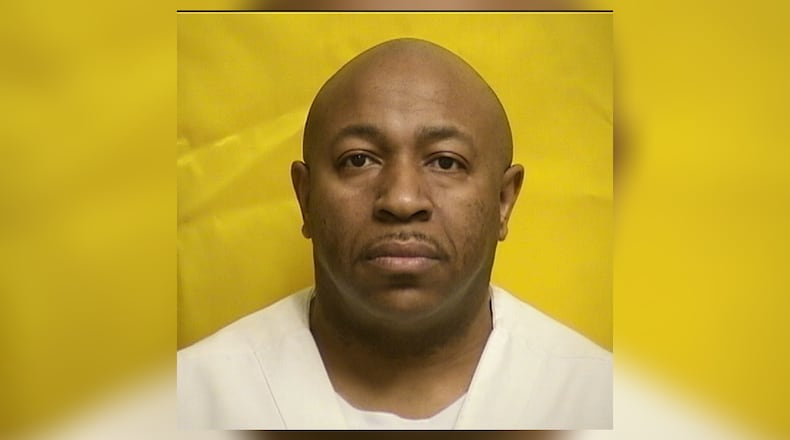Coleman had been scheduled to be executed on Oct. 30, 2025. That execution date has now been moved to Sept. 13, 2028.
Why no executions?
DeWine’s office said the state has been issuing death row reprieves “due to ongoing problems involving the willingness of pharmaceutical suppliers to provide drugs to the Ohio Department of Rehabilitation and Correction (DRC), pursuant to DRC protocol, without endangering other Ohioans.”
DeWine has previously said that if Ohio diverts pharmaceutical suppliers’ drugs for executions, those companies may refuse to supply medicine the state uses to treat patients at veterans’ homes, Department of Youth Services sites and other facilities.
Credit: Bryant Billing
Credit: Bryant Billing
Springfield murder case
In Coleman’s murder trial, prosecutors said Coleman, then 26, shot Stevens twice in the head in an alley off West Pleasant Street in Springfield to prevent her from testifying against him in a drug trafficking case.
The murder was in January 1996, and by the time of Coleman’s trial in February 1997, he was serving a multi-year sentence for drug trafficking.
Prosecutors alleged Coleman acknowledged his crime to fellow jail and prison inmates. As of 2021, all of Coleman’s state and federal appeals were over, according to the Associated Press.
Coleman’s attorneys had argued that Coleman was unfairly targeted as a Black man by overzealous prosecutors during the 1990s war on drugs. The Associated Press reported in 2021 that his attorneys said a white man confessed to the crime but that his claims had never been investigated.
Coleman remains incarcerated in the Ross Correctional Institution near Chillicothe.
Columbus, Cleveland executions delayed
The other two men who had their executions delayed by DeWine on Friday were:
- Kareem Jackson, who was scheduled to be executed on Dec. 10, 2025 for the murder of two men in Columbus in 1997. The new date of execution has been moved to Oct. 11, 2028.
- Quisi Bryan, who was scheduled to be executed on Jan. 7, 2026 for killing a Cleveland police officer during a traffic stop in 2000. The new date of execution has been moved to Nov. 15, 2028.
Ohio execution history
Executions in Ohio were common from the 1800s into 1963, according to Ohio Department of Rehabilitation and Correction records, with over 300 people executed in that span.
Ohio was one of many states that paused executions in the early 1960s, in advance of a Supreme Court decision suspending capital punishment nationwide in 1972.
A subsequent Supreme Court ruling in 1976 allowed executions to resume, but Ohio didn’t execute anyone again until 1999.
From 1999 to 2018, Ohio executed 56 people who had been convicted, according to ODRC. But since Mike DeWine was elected governor in November 2018, Ohio has not held any executions.
The last execution in Ohio happened in July 2018, when Robert J. Van Hook was executed for the 1985 murder of David Self in Cincinnati.
Credit: Ohio Department of Rehabilitation & Correction
Credit: Ohio Department of Rehabilitation & Correction
In August 2024, David Lee Myers of Xenia, who spent nearly 30 years on Ohio’s “death row,” had his murder conviction vacated because of new DNA evidence and expert testimony. He was released from prison (with GPS tracking) and granted a new trial in the 1988 slaying of Amanda Maher.
A bipartisan group of Republican and Democratic state legislators has repeatedly introduced bills at the Ohio Statehouse to end capital punishment in Ohio. Last year, a different group of Ohio lawmakers argued the state should resume executions using nitrogen gas. Neither of those bills have been approved by the full state legislature.
A total of 23 U.S. states have abolished the death penalty, some as far back as the 1800s, others as recently as Virginia in 2021.
About the Author




